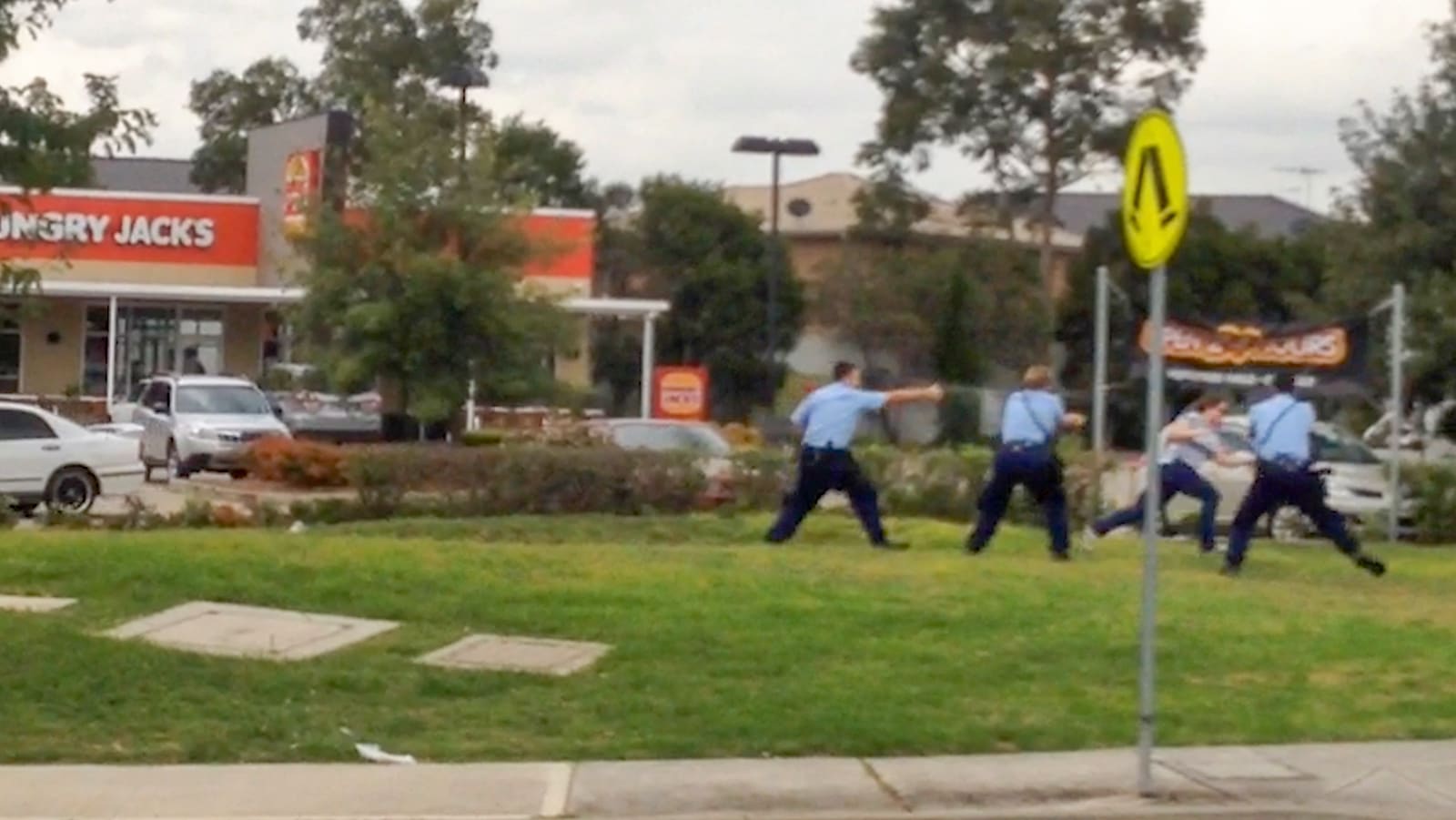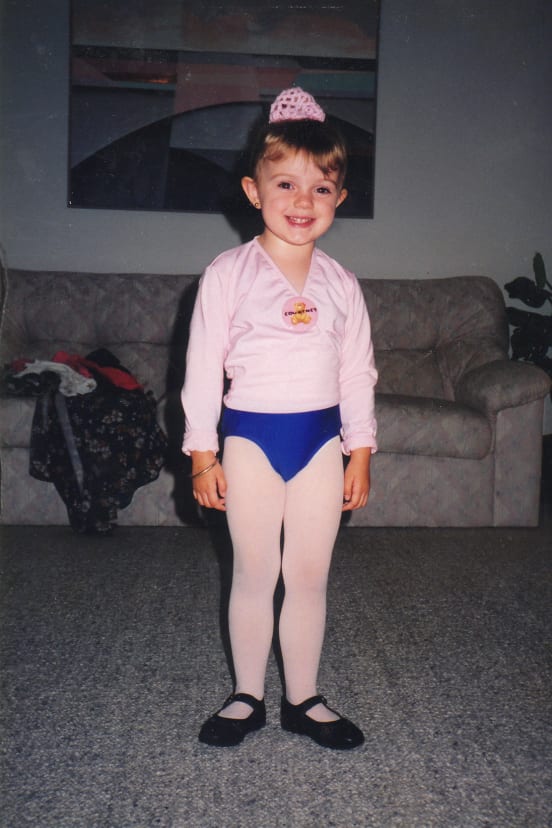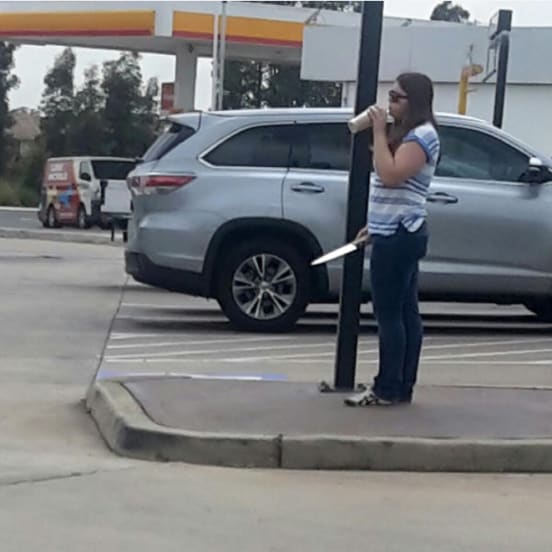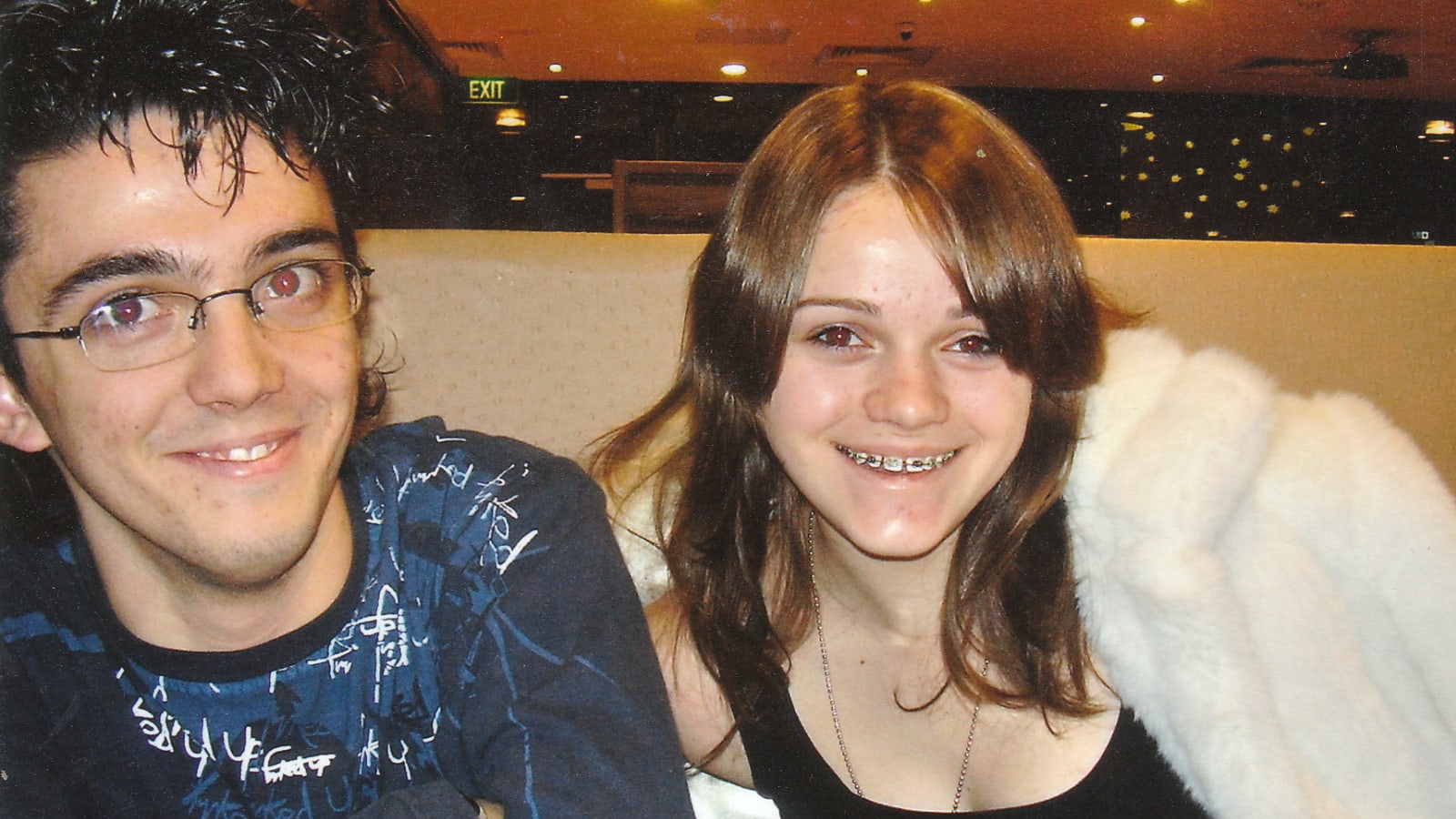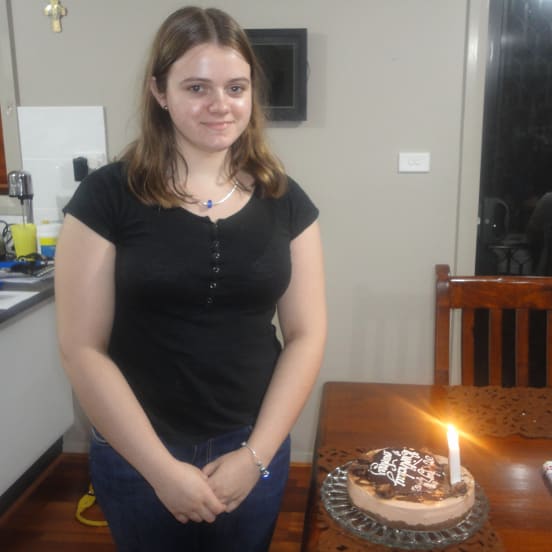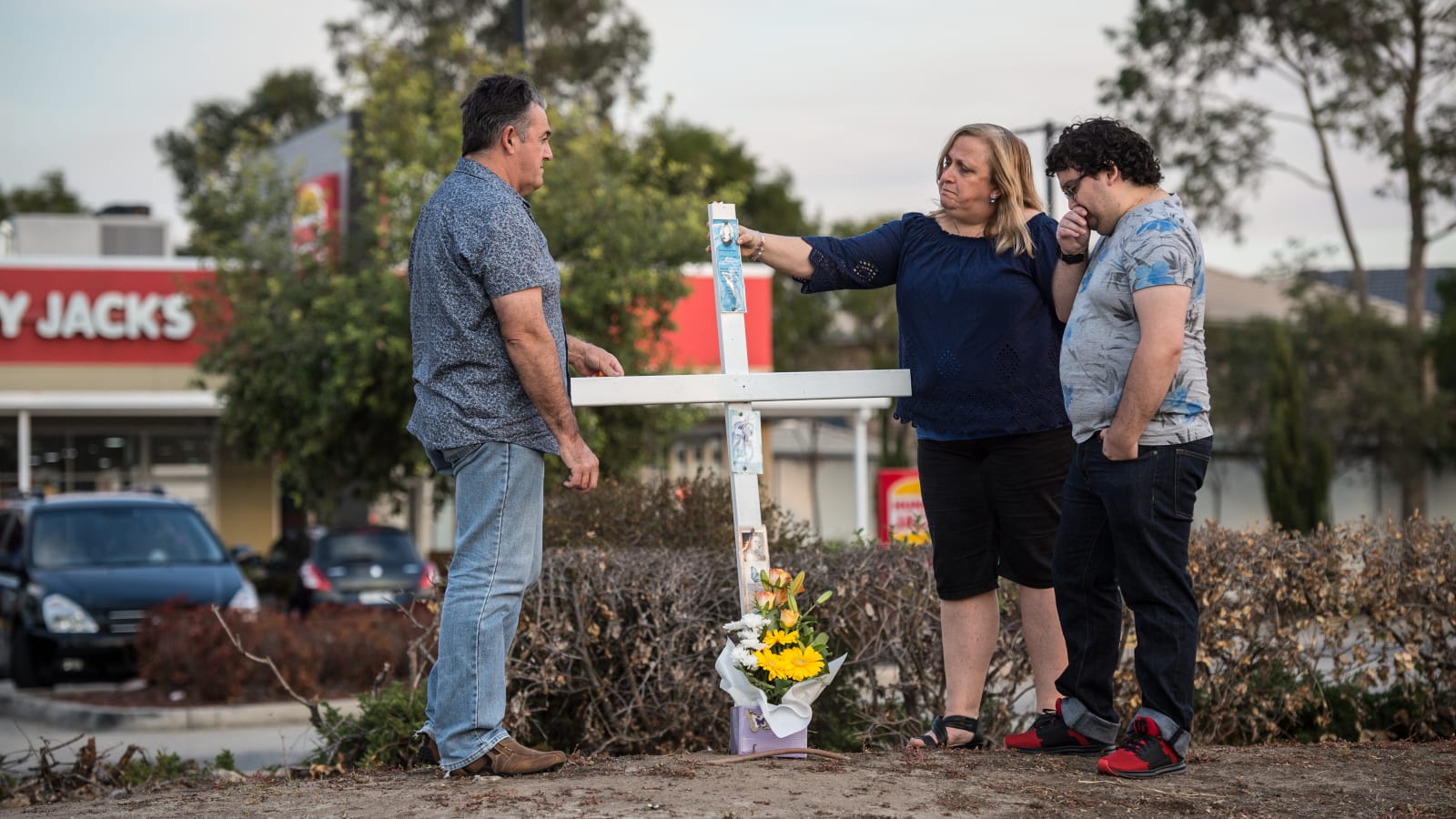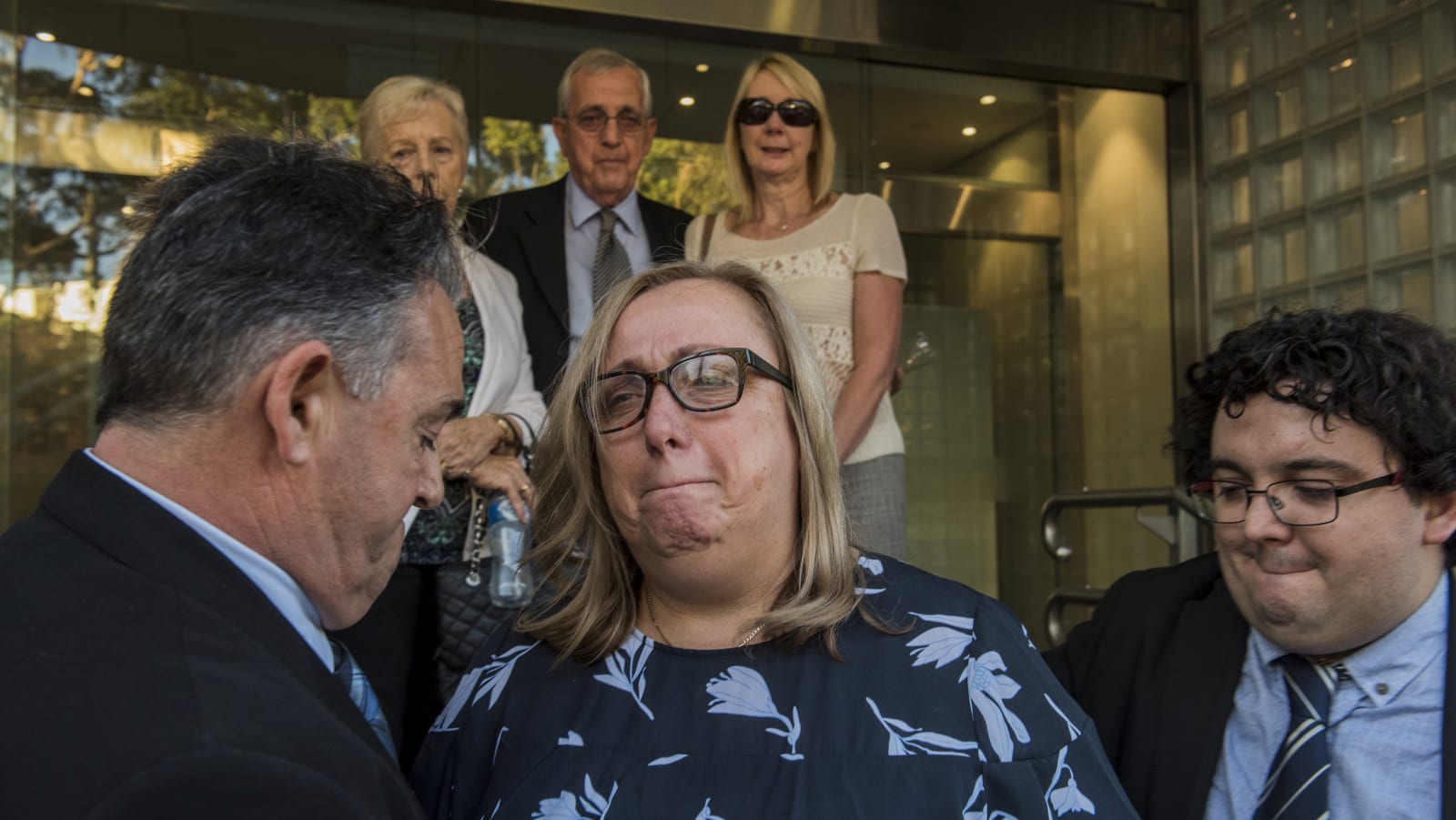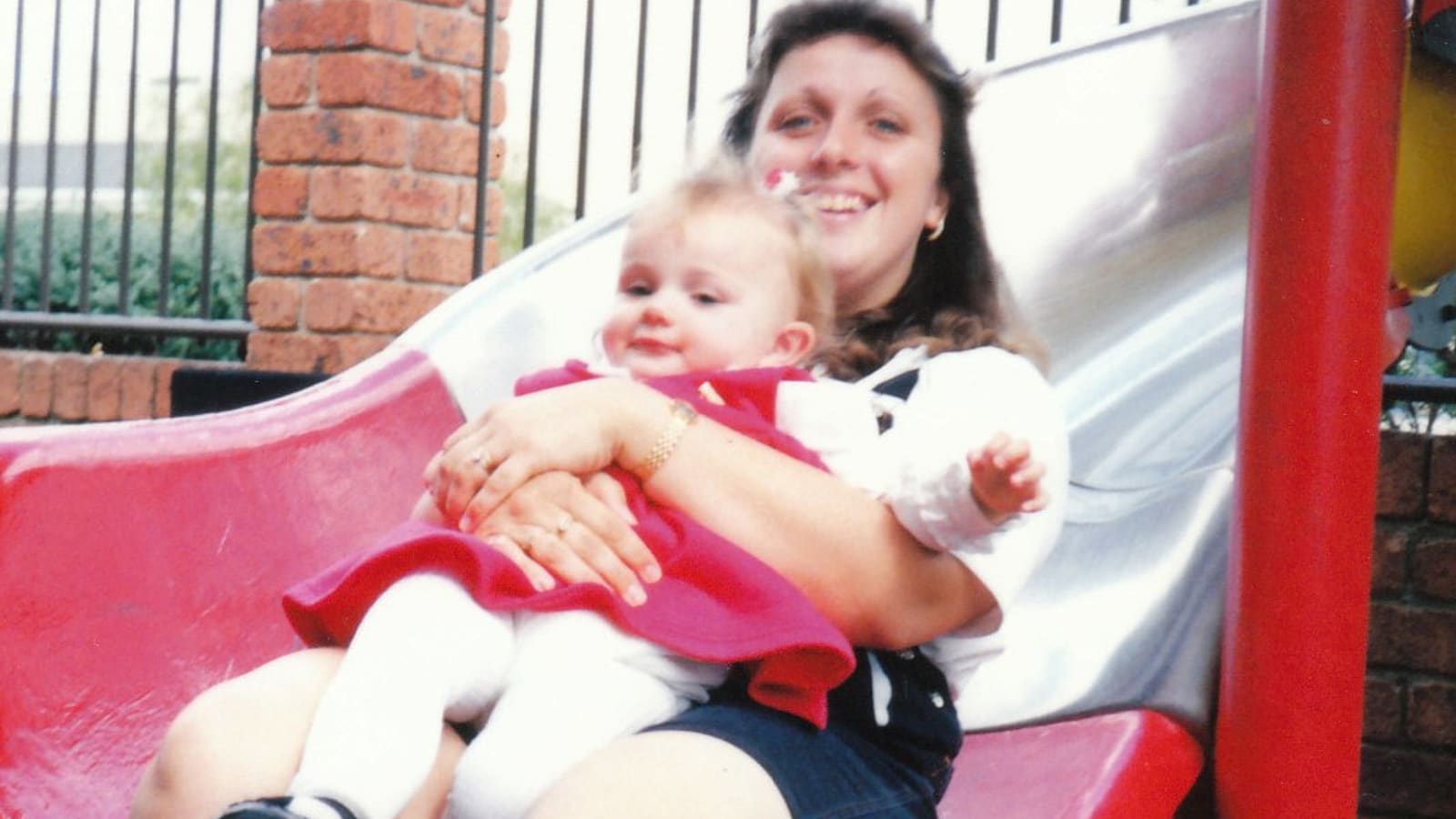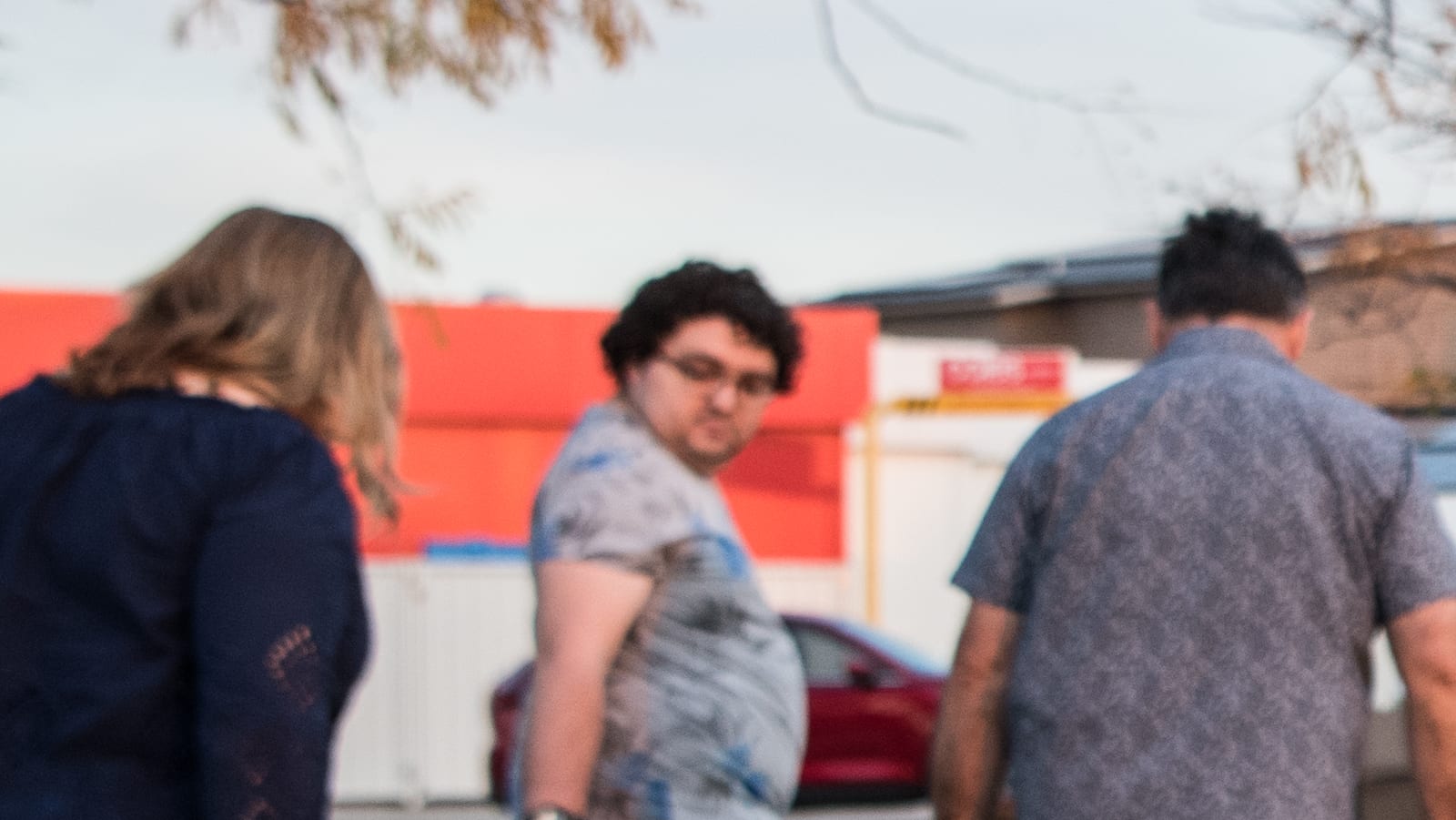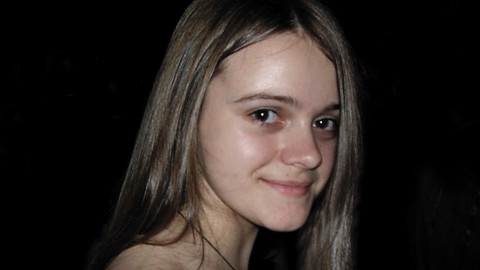
Warning: this article is extremely disturbing.
Forty-one seconds. That’s how long it took for police to shoot Courtney Topic, after the 22-year-old was seen brandishing a knife outside a Sydney Hungry Jack’s. Three years on, her family retraces her story in a plea for better police training in mental illness.
By Greg Callaghan & Megan Gorrey
On a sweaty, still Tuesday morning in February 2015, only 90 minutes before she'll be shot dead by police outside Hungry Jack's in Sydney's Hoxton Park, only six hours before her face will flash across nationwide news programs, Courtney Topic is hanging the family's washing out to dry. The 22-year-old, lathered in sunscreen against the hot rays – she's become very fearful of skin cancer – takes care to triple-peg every item, just in case a southerly gust blows up later.
In their rush to get out the door, none of the tight-knit Topic brood – Courtney's mum Leesa, dad Ron and brothers Kristopher, Zachary and Brodie – had a chance to kiss her goodbye. She was still in her bedroom at 10am when Zachary, the last out, knocked on the door. "See you tonight," he yelled out before leaving. "Okay, see you then Zac," she piped back.
This bright, airy space, with its large white bookcase jammed tight with Harry Potter books and Frankie magazines, with its stuffed panda tucked into one corner and Winnie the Pooh in the other, is Courtney's sanctuary. It's here she pulls on her headphones and soaks up everything from classical to heavy metal music while constantly pacing up and down, a habit that's comforted her since her teens. On a bedside table sits a pile of timestables flash cards, which she's using to practise her maths for her job on the checkout at the local Woolies. Blu-tacked to the wall above her long white desk, where she commits her deepest thoughts and fears to her diaries, is a poster with a list of one-liners under the heading "Everybody Knows Shit Happens".
Over dinner the night before – her favourite, chicken carbonara – Courtney mentioned she might duck down to Hungry Jack's in the morning to grab one of their $1 large frozen Cokes. Courtney's usual response to questions about work – she'd only just finished her shift at Woolies – was to utter "beep, beep, beep", mimicking the monotonous sound of the checkout scanner. But the talk soon shifted to other subjects. Around 9.30pm, she came down the stairs from her room, made herself a Nutella sandwich and, after sharing a laugh over the show they were watching, Top Gear, kissed them all goodnight.
"Just leave me a note, Mum, so I won't forget," Courtney always told Leesa if she needed anything done around the house. So when she sees the request on the kitchen notepad to hang out the washing, Courtney doesn't hesitate. While it's always been in her nature to be helpful, she bridles at being pigeonholed for chores just because she's a girl. "The boys need to do their share," she'd remind Leesa.
Courtney has always been different: the quiet, dreamy kid who sat at the back of the class and shyly came up to the teacher afterwards to ask questions rather than shove her hand in the air. For four years, until the age of 15, she had to wear a fibreglass brace for a spine curvature, a burden she never complained about. Variously diagnosed with attention deficit disorder and later Asperger's, and on and off Ritalin, Courtney would downplay her anxieties and worries, only seeking help from her parents when she was in a state of anxious meltdown. Her standard response to anyone whingeing about life's challenges was, "Suck it up." Whenever Leesa tried to get Courtney to open up about what was troubling her, she'd invariably reply, "Mum, I don't need to talk, I'll be fine".
But Courtney isn't fine. Over the past few months she's been spending more and more time in her room, spiralling deeper and deeper into her secret world. She's become preoccupied with self-improvement, buying Dummies books on learning Spanish, maths and computing, and is tormented by the look of her body. Vastly more troubling is that she's become paranoid, the scale of which her parents will only fully appreciate in the weeks ahead, when in their grinding despair they search her room for signs of her state of mind. Worst of all, Courtney isn't telling her parents about the voices hounding and frightening her.
It's just after 11am. Dressed in blue jeans, a striped top and sneakers, with dark wraparound sunglasses, Courtney grabs a timber-handled carving knife left on the kitchen bench from cutting up the chicken the night before. She walks out the front door, which slams shut behind her.
Head down, staring at the pavement, Courtney is talking to herself, occasionally yelling out and hitting herself in the head. After 20 or so minutes, she reaches the six lanes of busy Cowpasture Road and crosses at the lights. At 11.35am she enters Hungry Jack's, the CCTV cameras above recording her, remembering her. Tucking the knife behind her back with her left hand, she asks for a frozen Coke, hands over her dollar, and leaves. She wanders aimlessly around Hungry Jack's carpark for several minutes, by turns talking to herself, taking casual sips from the cup, pointing the tip of the knife at her stomach, and using it to brush her hair back.
By now many people have called triple zero. The manager of Hungry Jack's. A woman with her infant son. Another woman parking her car. No one is particularly worried about any risk to themselves – more what this young woman might do to herself. One thinks she might be mentally ill, another suspects she might be on drugs, and another just thinks she looks like a "zombie".
A message is broadcast over police radio: "Observed a female talking to herself. Apparently hit herself in the head with one hand, and in the other in possession of a knife... Distressed... Informant's a bit worried she might be going to hurt herself." Two minutes later another message is sent out: "Observed a female talking to herself and she also held a knife in one hand." Twelve minutes later, another message: "Your female is near Hungry Jack's ... she's still got that large kitchen knife, she's waving it around."
One of the officers requests more information. "Just about to go off at Hungry Jack's, can you brief me what's going on?" he asks. The answer: "There's been a few reports of this 16- to 17-year-old wandering around with a large kitchen knife. This time she's pointing it at her stomach and there's people concerned about self-harm."
It's 11.45am. Sirens blaring and lights flashing, a squad car with two officers from Green Valley police station pulls up near the intersection of Cowpasture and Hoxton Park roads. Within seconds, another police car arrives. Courtney is standing alone on a grassy verge adjacent to the car park, swaying, holding the knife at her side. Two officers make a frantic dash towards her, adrenalin pumping; within seconds they are joined by a third. They form a triangle around Courtney; one, a probationary constable with a Taser at the ready, another with capsicum spray, the third with his gun raised.
By now, passing cars have stopped at the lights; a couple of drivers and passengers are filming the scene with their mobile phones, while neighbours opposite Hungry Jack's are peering over their back fences, wondering what all the commotion is about. One witness hears Courtney say, "Leave me alone", in a little girl voice.
Nothing in Courtney's past has foreshadowed this terrifying public moment. She's never had any problems with the police, not so much as a parking ticket. She's never smoked, drank or used recreational drugs. Never carried a knife before in public.
"Drop the knife."
"Put the knife on the ground for me."
A female constable repeats her demands, while the two male officers yell again and again, "Drop the knife!"
Courtney ignores their demands. Poker-faced, it's as if she doesn't hear them or even recognise their presence. The female officer tries to fire the Taser, which fails to eject. Another officer fires his OC (capsicum) spray, which splatters over Courtney's glasses and possibly into her eyes.
Courtney drops her cup, and stumbles or takes a few fast steps forward in the direction of busy Cowpasture Road, directly into the path of the third policeman, with her knife slightly raised. One witness thinks she is lunging at the officer, another that she is trying to escape; either way, she doesn't drop the knife and the officer has his gun at the ready.
He fires a single shot, hitting Courtney in the chest, just as he's been trained to do: it's next to impossible to hit a moving target by aiming at legs or arms. The standard issue hollow-point bullets in his gun, designed for maximum stopping power, have a dented tip that mushrooms when they strike a target: while they're more lethal to a victim, they're less likely to pass through their body and wound someone else.
Courtney puts her hands on her chest, slumps to the ground, and loses consciousness.
Seconds later, a senior constable trained in mental health emergencies – de-escalation, talking slowly and calmly, slowing things down – arrives at the scene with his partner. He's here as part of a general call-out, not because of his expertise. Cradling Courtney's head, he helps his fellow officers apply first aid and CPR until the paramedics arrive and frantically try to revive her. It's too late.
At 12.02pm, on February 10, 2015, Courtney Topic is pronounced dead, a bit over two weeks shy of her 23rd birthday.
Hunched over nearby, the young officer who shot Courtney, clearly traumatised, is being comforted by his colleagues. Highway Patrol are blocking off the surrounding streets, and blue and white tape is being strung around the scene. Police are now checking Courtney for ID. No mobile phone, but she's carrying her driver's licence in her wallet.
Forty-one seconds. That's the time that has elapsed between the police arriving and the officer firing the single shot.
The scene a few moments before Courtney is shot dead by a police officer. Photo: Supplied
Only a couple of kilometres down the road, at John the Baptist Primary School in Bonnyrigg Heights, Leesa Topic is assisting a teacher with a special-needs child. A couple of her colleagues mention in the lunch room that they've read on Facebook that a young woman with a knife has been shot by police at Hungry Jack's in Hoxton Park.
Shivers, Leesa thinks to herself, that's a bit close to home. She rings her eldest son Kris, who is picking her up from work, to tell him not to come via Cowpasture Road, as there has been an incident, but it goes to voicemail. Then she calls Courtney, leaving several messages on the home answering machine telling her that if she hears helicopters it's because "something bad" has happened nearby. When there's no answer, Leesa assumes Courtney is in her room with her headphones on.
Across town at Villawood, Ron Topic, a forklift mechanic, is working on a faulty engine as talkback radio blares out from his van. When he hears about the shooting incident at Hoxton Park on a news bulletin, he, too, calls Kris to warn him of the street block-offs. Kris, who never answers his phone while he's driving, wonders why his phone is constantly blinking with messages.
It's now just after 2pm. The police are at the Topics' house in Carnes Hill. After no one answers their knocks, they jump the fence and peer in through a back window. They see paperwork with Leesa's name on it from John the Baptist Primary, so phone the principal, Tony Lo Cascio. Leesa's name is called out over the PA system, saying she's urgently needed in the principal's office. When she arrives she finds two officers standing, waiting for her.
"I'm sorry to inform you there has been an accident," one officer says. "Your daughter has been killed."
Ron is called into his base at Wetherill Park, under the guise of a computer malfunction; here he meets with detectives who break the news and escort him to the school. The police also contact Zac's partner, asking him to urgently accompany Zac to Penrith Police Station, from where police drive him to join his family. Lo Cascio, the principal, has organised for the youngest brother, Brodie, to be brought across from the adjoining high school, Freeman Catholic College.
The police couldn't have been more sensitive and helpful. When Kris arrives, still blissfully unaware of what has happened, Leesa buries her face in his chest, tells him the news and the pair collapse. Hyperventilating and inconsolable, Leesa can only ask the question thundering like a runaway train through her mind.
Why did they have to shoot my daughter? Why?
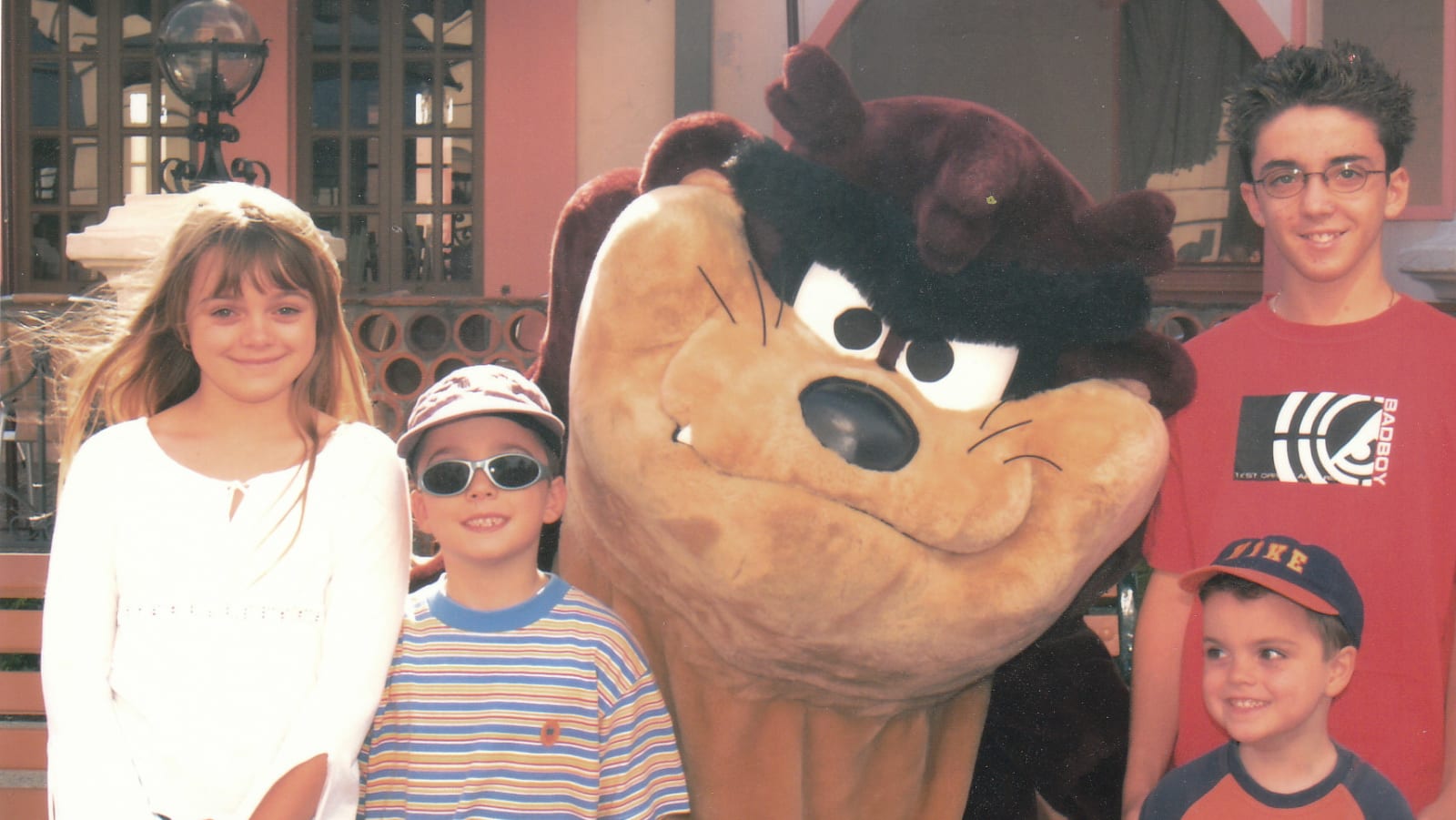
"It's okay Mum," smiled Courtney, looking relieved and happy as she emerged from a session with a psychiatrist at the Headspace clinic in Sydney's Campbelltown, three years before her death. "I've got Asperger's."
At 19, Courtney had at last received a plausible – and comforting – explanation for the riddle of what had been wrong with her since she was a child, through conflicting diagnoses and on and off trials of different medications. It was a diagnosis Courtney could own, correcting people who imagined that those with Asperger's or autism lacked empathy for others. While those with autism have difficulty recognising facial expressions, or if someone is upset, they still feel lots of empathy once they're told about others' emotions.
"She was very sweet," says Leesa lovingly, sitting at her long timber dining room table beside Ron and Kris, flicking through pages of sympathy cards she has assembled in a large album. "She loved animals. She never raised a hand at anyone or anything."
Courtney Topic, age 3. Photo: Courtesy of the Topic Family.
It's late April 2018. While the pain of losing Courtney is now more of a vice, and less of a sharp dagger for the family, the finality of her death still feels unbearable. In the days and weeks after Courtney was shot, this immaculate five-bedroom, two-storey home was inundated with cards, flowers and letters of support – not only from the local Catholic community, who rallied around two of their most popular parishioners, but from across Australia. A bookcase opposite is a Courtney shrine. In a couple of framed photos, she's smiling or dressed up for a party, beautiful and awkward in that teenage way. Her pencil sketch of a bodiced princess sits on the third shelf beside a copy of Anne of Green Gables, one of her favourite books.
The infamous photo of Courtney with the knife outside Hungry Jack's: 'To be remembered like that is awful,' says her brother Kris. Photo: 7 News
"That infamous photo of Courtney holding the knife, the one that went right across the world, that made her look like a zombie, that wasn't Courtney," shudders Kris. "To be remembered like that is awful." Courtney was particularly close to Kris, who was only two years and nine months older. "I miss her little giggles late at night, when she was playing computer games," he says.
"She had a fantastic general knowledge," observes Ron. "She was fascinated by the Renaissance. She would always have a book with her. I think it was her way of going to faraway places and learning about different things." Recalls Leesa: "A psychometric test at Learning Links in Fairfield revealed Courtney was in the 95th percentile of students. She was incredibly bright, but her concentration and focus were in the 30th percentile."
Courtney with brother Kris, in 2007. Photo: Courtesy of the Topic Family
In primary school, Courtney was a bubbly and occasionally cheeky child with several good friends who enjoyed playing Barbie Doll versus Transformers with Kris. But Courtney found the constant interpersonal sparks of high school somewhat challenging.
She wasn't interested in hanging out with the other girls, gossiping about boys or swapping make-up tips. She went to fewer parties and spent less time at them when she did. "On one occasion Ron wasn't even home, and she already called him to pick her up," recalls Leesa.
Although obviously smart, Courtney was distracted and unfocused, with her schoolwork suffering as a result. She managed to get through the Higher School Certificate with below average marks, but not without a meltdown. In the year before her death, she'd look at her friends on Facebook and all they were achieving, and feel like she was slipping behind. One evening she sat down with her parents and explained she needed to see a psychiatrist again. But when they fretted that they couldn't get an appointment for another three months, she reassured her mum, "Don't worry, I'm fine."
Courtney's inner life in the year before she died is now a source of constant speculation. "I have a photo of her lying face down on the couch on Christmas Day," says Leesa, her eyes moistening. "We were all tired that morning because we were at Midnight Mass, but she looked exhausted. I suspect she hadn't been sleeping well for months."
The knife that Courtney carried that day has its own family backstory. "Thirty years ago, I did an apprenticeship as a chef and my dad bought that carving knife for me," Leesa explains. "It was the knife we used to cut birthday cakes since the kids were small."
Courtney Topic celebrating her 22nd birthday. Photo: Courtesy of the Topic Family
It was the knife, interpreting whether Courtney was holding it or wielding it, that became a pertinent point of discussion at the inquest into her death, held earlier this year. For three long years the Topics waited for answers.
While they were never thrilled about the police investigating their own – specifically, investigators from the State Crime Command's Homicide Squad and the South West Metropolitan Region – the Topics took heart from the fact it was being overseen by the Professional Standards Command.
They were deeply impressed with the senior homicide detective, Gary Jubelin, who liaised with the family every step of the way, promising a transparent investigation. It was Jubelin who handed back Courtney's earrings and sunglasses, still splattered with capsicum spray. "I washed them and put them away in a drawer," says Ron sadly.
The Topics braced themselves for the inevitable return of the media scrum once the inquest began, but at least this time, the TV cameras and microphones would be waiting outside the Coroner's Court in inner-city Glebe and not their quiet suburban house. For the family, the question hanging over the entire inquest was whether the police would say sorry – and improve their interactions with the mentally ill – so that Courtney's death would not have been in vain.
Ron and Leesa Topic, along with oldest son Kris, gather at the site where their daughter and sister Courtney died. Photo: Wolter Peeters
The heat of summer is over, and the air soft from the first flush of autumn, as a posse of uniformed police officers busy themselves outside Hungry Jack's. A couple stand near the white wooden cross set up by John the Baptist principal Lo Cascio and students as a memorial to Courtney in the aftermath of the shooting. The cross is nearly always adorned with flowers; today is no exception. Leesa feels overwhelmed by the number of blue uniforms sauntering about – in her mind's eye they're still surrounding Courtney.
It's March 19, 2018, and the inquest is beginning here, with the deputy state coroner, Liz Ryan, members of the respective legal teams, police and the Topic family all in attendance. They're here to obtain a real, on-the-ground insight into the distances between witnesses and the actual spot on the verge where the incident unfolded. While it might appear that there is no arguing with the contents of a police photograph, CCTV footage or video from a phone, distances and angles can be deceiving, leading to different interpretations of a single event.
The shooting of Courtney Topic
Responding to emergency calls, three police officers surround Ms Topic, who was standing out the front of a western Sydney Hungry Jacks with a kitchen knife talking to herself.
Later they assemble at the Coroner's Court, the court video and CCTV footage to be played on a flat-screen monitor hanging from a wall. Leesa is sitting between Ron and Kris; in the row in front are her elderly parents, Bede and Judy. A clutch of police officers, including the three who surrounded Courtney, are talking in hushed tones less than two metres away, a handful of journalists sitting in between.
"Everyone [at the inquest] feels deeply for what you are going through," declares deputy coroner Ryan. Leesa is hunched into Ron's shoulder, Kris is shaking his left leg. Leesa tries to keep Courtney's mantra in mind: "Just smile and nod, Mum, just smile and nod." It crosses her mind that Courtney would probably enjoy this; she loved legal studies and legal dramas.
Lawyers question a string of police, witnesses and experts on the actions, communications and training of officers linked to Courtney's death. Counsel for the inquest tells the courtroom that the case raises much broader questions about how police globally deal with mentally ill people in crisis. One of the things that emerges during the inquest, from psychiatrists' and psychologists' reports, is that Courtney had reported hearing voices as early as age 15.
Leesa weeps as a consulting forensic psychiatrist tells the inquest that Courtney was probably delusional, scared and confused that morning, likely due to an untreated psychosis caused by schizophrenia. This diagnosis comes as a complete surprise to the Topics, as it was never mentioned to them by any of Courtney's psychiatrists or psychologists, although "possible schizophrenic symptoms" are mentioned in a couple of their reports. Witnesses in coming days recall that Courtney looked "unwell" and "didn't budge" when police surrounded her. "She was in her own world," one said. "It just didn't faze her at all."
The female constable who tried to fire her Taser grows emotional as lawyers ask if she considered disengaging, walking away from Courtney when she didn't respond to demands to put the knife down. "No. I felt it was totally justified," she says. After she breaks down in the witness box, as Leesa and her mother sob from the public gallery, the deputy state coroner calls a short break.
Following two weeks of witness testimony and expert analysis, the young police officer who fatally shot Courtney makes his way to the witness box. The confrontation happened within a "matter of seconds", he says, and the only words he heard were "female, striped shirt, knife, public place". He admits he "could have taken a few seconds" to review the police callout messages, some of which raised concerns about mental health and the risk of self-harm, before he got out of the car. He found Courtney's refusal to drop the knife odd, but didn't "make assumptions" as to whether she may have been mentally unwell.
When he returns to the witness box for cross-examination later in the day, the officer, who has completed a one-day mental health training course, denies pulling the trigger out of panic. "I considered I was in a bad situation, not whether it was high risk, just that it was terrible and I needed to take action." When counsel assisting the inquest asks what he imagined was going to happen, the officer declares: "I thought she was going to stab me. Every time I moved, she moved." He insists that, even with the benefit of additional mental health training since the event, his response would have been the same. "I still wouldn't have behaved any differently on arrival."
Those nine words – I still wouldn't have behaved any differently on arrival – reverberate through the courtroom and cut Leesa, Ron and Kris to the quick. Was this the police department talking, or this officer? Later in the inquest, a NSW Police senior operational safety instructor tells the court that the three officers who surrounded Courtney had "acted within the bounds of the training, policy and procedures of the NSW Police".
When the inquest wraps up on the afternoon of Friday, April 16, Leesa, with pain wracking her voice, makes a powerful statement to the court, speaking of Courtney's "strong sense of social justice. How ironic that her tragic death is the biggest injustice of all." But Leesa isn't finished yet, not by a long shot, and outside the court, facing a clutch of TV cameras from the evening news, she expresses her overwhelming frustration: "We could not understand why the officers who arrived at the scene crowded so quickly and closely around a young woman who did not, in the moments before they arrived, pose an immediate threat to members of the public. We could not understand why officers, on encountering a person who was displaying signs of a possible mental illness, would not take steps to defuse the situation, and would resort to lethal force so quickly."
Ron, Leesa and Kris Topic outside Glebe Coroner's Court during the inquest into Courtney's death. Photo: Steven Siewert
It's nightfall, and we're climbing the dark stairs to Courtney's room, which the Topics have kept exactly as she left it. "We spoke to friends of ours who lost their 18-year-old son a decade ago, and they only packed up his room a couple of years ago," says Leesa softly. "This still feels like her room," reflects Ron, looking around at the familiar surroundings.
After her death, they found a paper shredder in Courtney's wardrobe, with 20-odd bags of shredded paper around it, so paranoid had she become about others reading her diaries. "The professional people at the inquest said she was hearing voices, but because she was over 16, it was kept confidential, and she didn't have to tell her parents," says Ron. Leesa sighs. "We were on to her mental illness but it wasn't enough. Not for a moment did we think she was schizophrenic."
Overall, the Topics found the police testimony at the inquest deeply unsatisfying. "We brought our kids up to respect the police," says Leesa. "We taught them to do the right thing and follow the rules. If you get done for speeding, you pay the fine and don't do it next time. But I lost something there … I lost respect for the NSW Police."
A re-enactment of the fatal police shooting of Roni Levi on Bondi Beach in 1997. Photo: Rick Stevens
Leesa is allowed to be angry. Since 1997, when mentally ill French photographer Roni Levi was shot by police while wading fully clothed into the Bondi surf with a large kitchen knife, at least 18 mentally ill people have been fatally shot by police in NSW, according to recently released police data obtained through the Government Information Public Access Act. Some of these shootings were highly publicised: 30-year-old Dan Mokmool, shot last year at Sydney's Central Station, after threatening police with a pair of scissors; Macquarie University graduate Elijah Holcombe, shot in an Armidale laneway in June 2009 after he grabbed a kitchen knife from a café; and father-of-six Ian Fackender, who had struggled with schizophrenia for 15 years, shot after grabbing a sword when he was confronted by police in his Bathurst home alone. Courtney is the first mentally ill woman to die in this way in NSW.
Courtney as a one-year-old with her mother, Leesa. Photo: Courtesy of the Topic Family
It's easy to be an armchair critic, of course; none of us can predict how we'd react in the thick of a volatile situation, when forced to make split-second, life-or-death decisions about a person behaving in a mad, unpredictable way. Every time they begin a shift, police officers face the prospect of a deadly confrontation, knowing that if things go pear-shaped they'll receive a public lashing and possible charges in the courts.
Mixing the power of a gun with a lack of real knowledge about approaching the mentally ill is not a good recipe, however, particularly given that of the 105 people fatally shot by police nationally between 1989 and 2011, 44 were suffering from a mental illness, according to the Australian Institute of Criminology. Without more comprehensive training in dealing with the mentally ill, there's the haunting certainty that history will repeat. In NSW, police officers complete a mandatory one-day course on de-escalation scenarios with the mentally ill as part of their training at the Goulburn Police Academy. Just 13.5 per cent of officers have done the more comprehensive four-day course.
Mention was made at Courtney's inquest of Project Beacon, a ground-breaking five-day training program focusing on minimal force, introduced in Victoria in the 1990s in the aftermath of a spate of police shootings and public outrage. As a result, shooting incidents were significantly reduced by the early years of this century, only to increase again as old practices crept back in. In Britain, where front line officers police without guns, and where discharging a firearm is an absolute last resort by armed back-up police, shootings of the mentally ill are extremely rare (one report records only two in Manchester, for example, in the past 20 years).
"Police often have to make a split-second decision and the impact is long-lasting for family members, the community and police officers," a spokesperson for NSW Police tells Good Weekend in an email. "[We] recognise this is a challenging space where safety of the community and police are a priority."
It's still too early for the Topics to talk about forgiveness. "We don't want to bash the police because we have to live in this community," says Leesa. "We are very grateful to those officers who tried, in vain, to save our Courtney's life, who held her head and hand as she drew her last breath."
A cross outside the Hungry Jack’s car park in southwest Sydney marks the spot where police shot Courtney Topic. Photo: Wolter Peeters
At least 800 people attended Courtney's funeral, including former primary and secondary school teachers, four priests, and work mates from Woolworths. The service was held at the church where Courtney was baptised and received her first Holy Communion, John the Baptist in Bonnyrigg.
The loss of Courtney is a permanent, aching void for the Topic family. "We have to live with this for the rest of our lives," says Ron.
The Topics do not envy the task of the deputy state coroner, who will deliver her findings on July 30.
"What it boils down to is that Courtney had a knife out in public, but she didn't deserve to die," says Ron, turning out the lights in her room.
To read more from Good Weekend magazine, visit our page at The Sydney Morning Herald or The Age.

